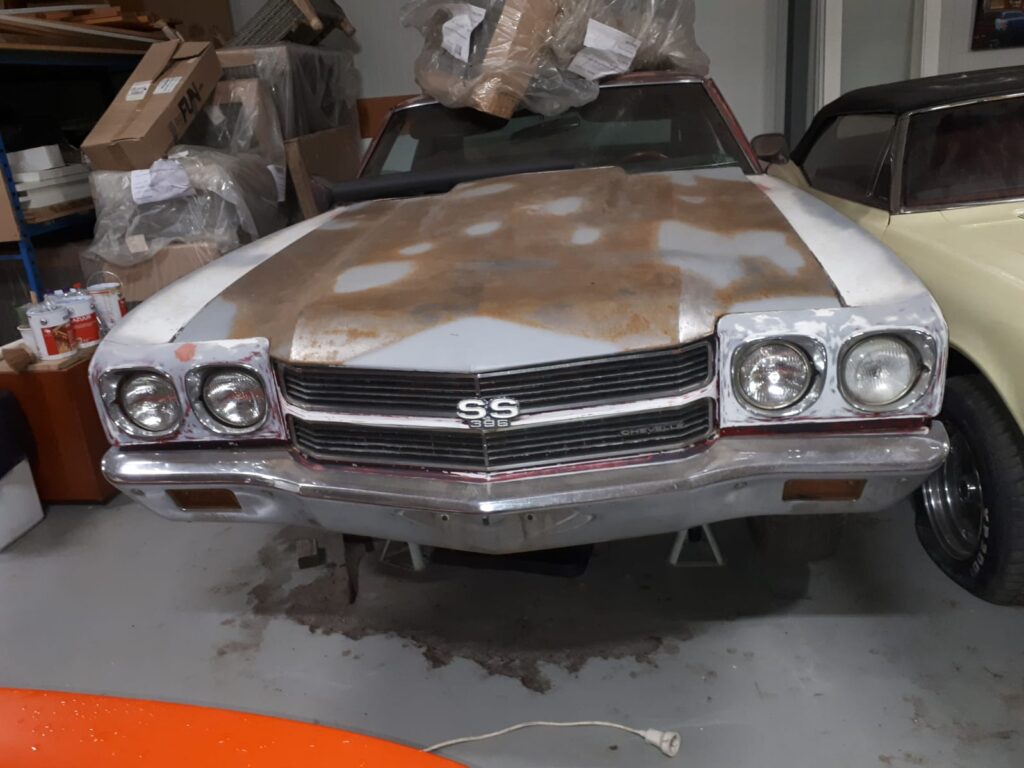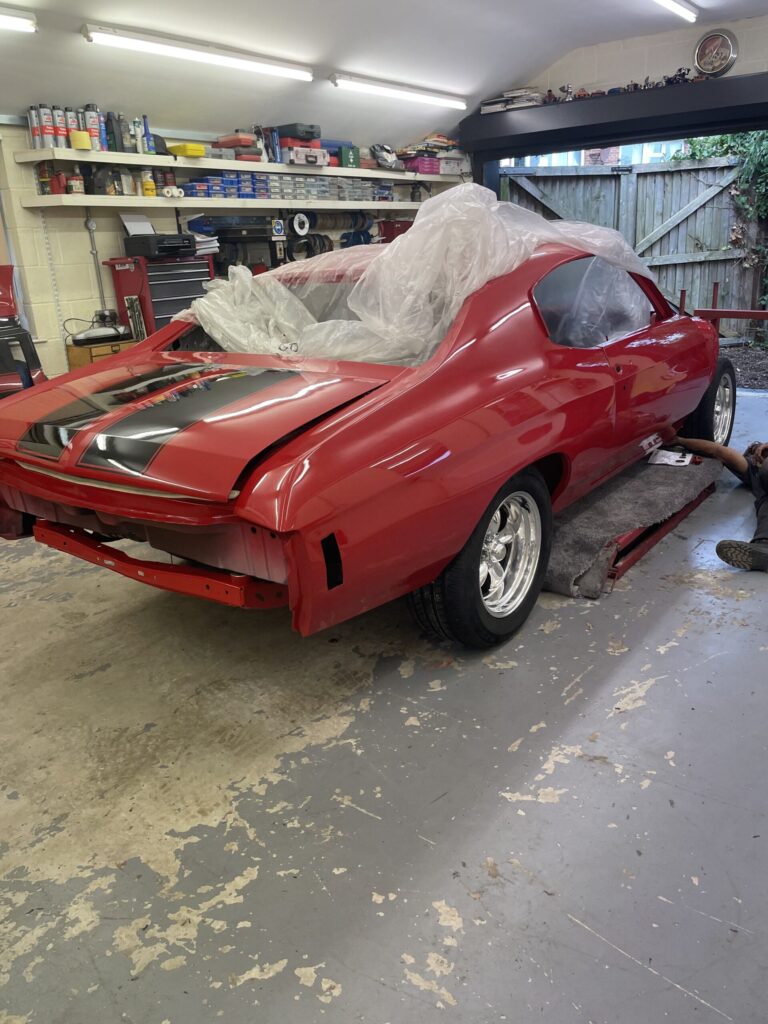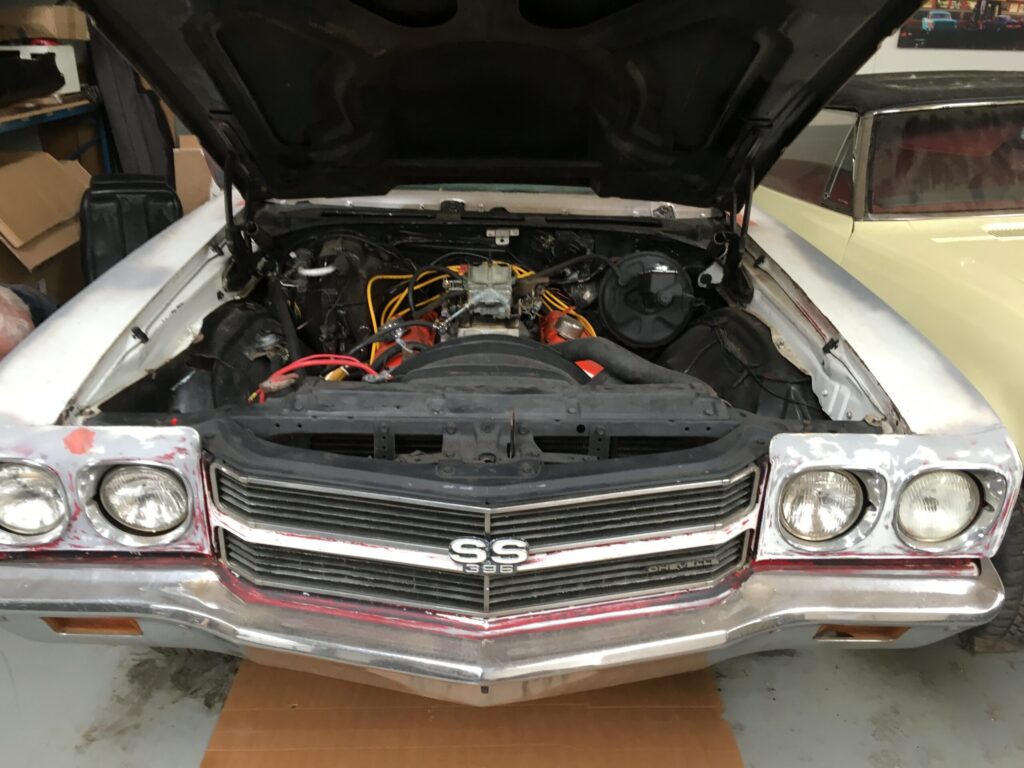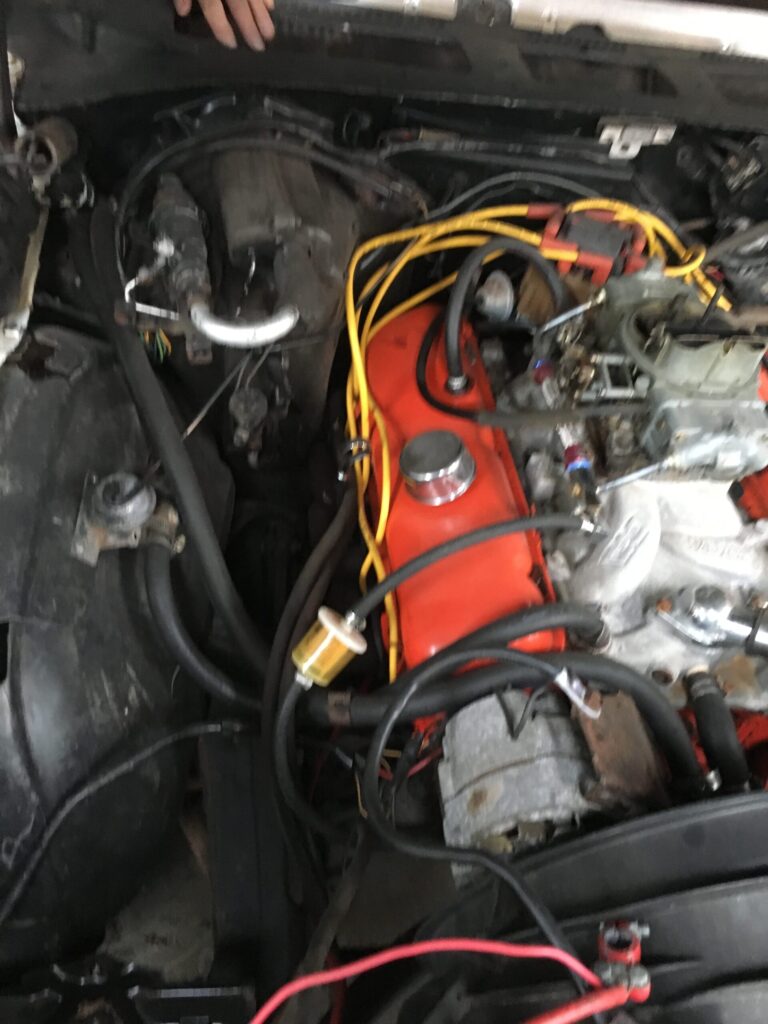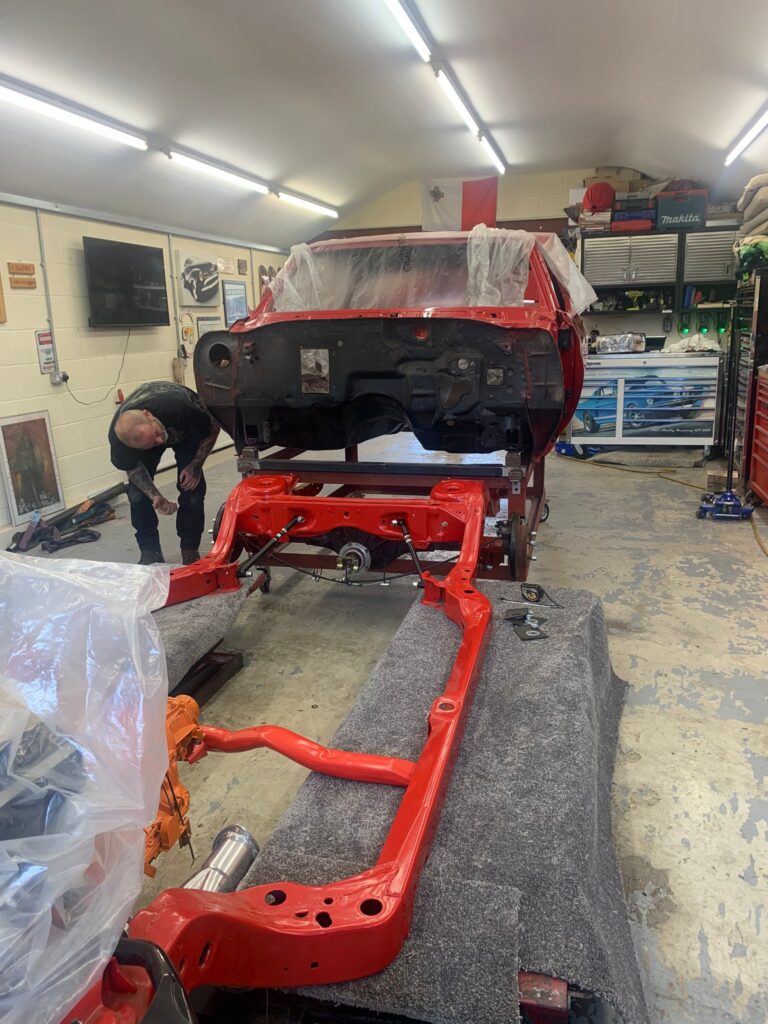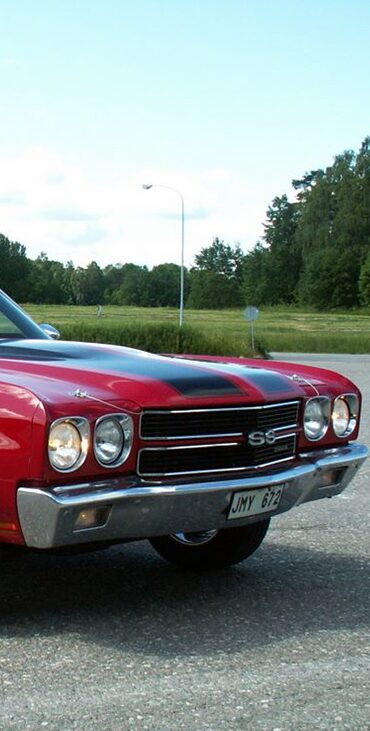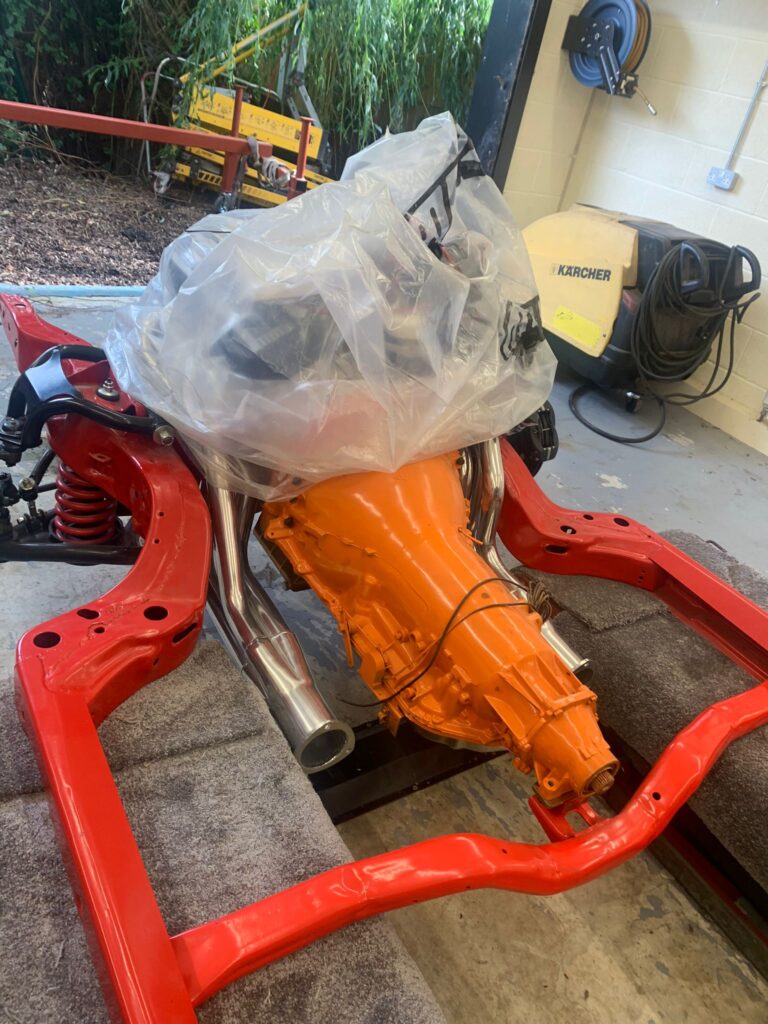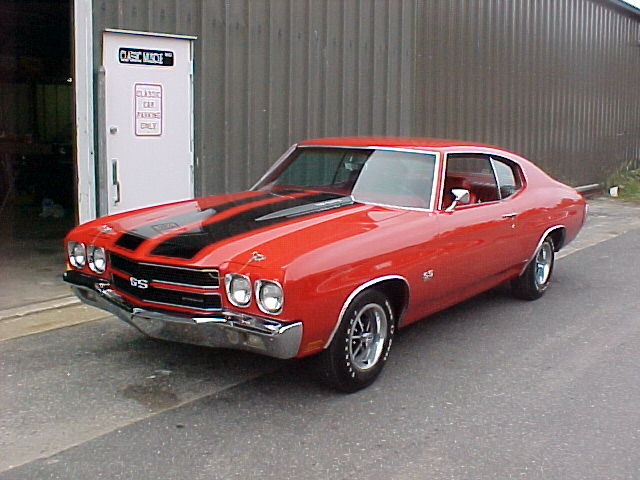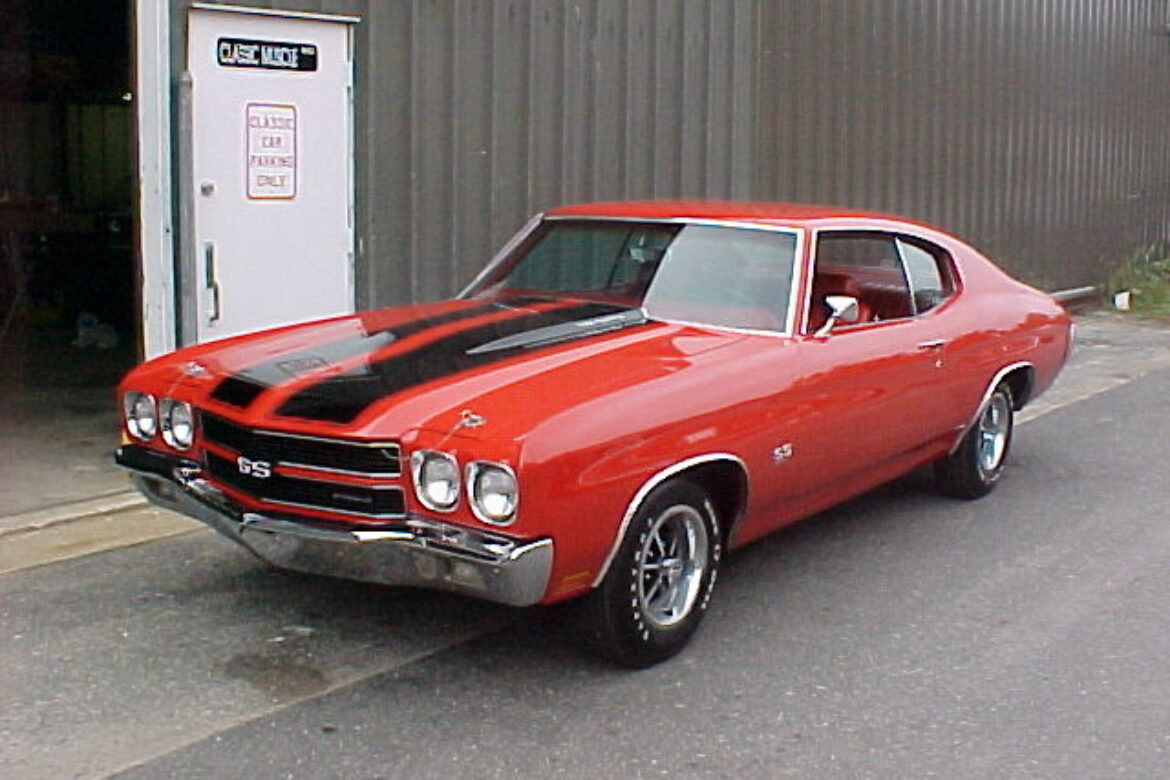Restoring a 1970 Chevelle: From Rotterdam Barn Find to American Muscle MachineStory starts here
When we first laid eyes on this 1970 Chevrolet Chevelle arriving on a trailer from Rotterdam, we knew we had something special on our hands. This iconic piece of American muscle car history was about to undergo a complete nut-and-bolt restoration that would transform it from a weathered barn find into a show-stopping powerhouse. The 1970 model year represented the high-water mark of the muscle car era2, and this particular project would honor that legacy while incorporating modern performance upgrades throughout.
Heart of the Beast: The 502 Big Block Foundation
The centerpiece of this restoration is the formidable 502 cubic inch Chevrolet big block engine. The ZZ502 represents one of GM Performance’s most popular crate engines, delivering an impressive 508 horsepower and 580 lb-ft of torque10. This engine demands respect with its frame-straining power output, featuring a combination of high-flow aluminum oval-port cylinder heads with 2.25/1.88-inch valves and a hydraulic roller camshaft designed to support low-rpm torque production10.
To complement this powerplant, we’ve specified GM aluminum cylinder heads that provide significant weight savings over their cast iron counterparts. These heads are constructed from 356-T6 aluminum and feature rectangular or oval intake ports depending on the specific application9. The aluminum construction not only reduces weight but also provides superior heat dissipation, crucial for a high-performance street application9.
The engine’s lubrication system receives special attention with a high-pressure Melling oil pump. Melling’s performance oil pumps feature improved rotor designs with enhanced strength, hard coat anodized aluminum housings, and high-pressure springs that can add 10-25 psi over stock applications7. This ensures adequate oil pressure and flow even under the most demanding conditions that this 502 big block will encounter.
Power Transfer: The Proven TH400 Foundation
Transferring all that power to the rear wheels requires a transmission built for the task. The Turbo-Hydramatic 400 represents the gold standard for high-performance automatic transmissions in muscle car applications. First introduced in 1964 for Cadillacs, the THM400 quickly became the go-to transmission for GM’s most powerful engines11. Its three-element turbine torque converter mated to a Simpson planetary geartrain provides three forward speeds plus reverse, with the robust construction necessary to handle the 502’s substantial torque output11.
The THM400’s reputation for durability stems from its heavy-duty internals and proven design. Many drag racers and street performance enthusiasts specifically seek out this transmission for its ability to handle substantial power increases without internal modifications11. For our Chevelle project, this transmission choice ensures reliable power delivery while maintaining the period-correct drivetrain character.
Foundation Upgrades: Chassis and Suspension Transformation
The restoration process began with a complete chassis refinishing using powder coating technology. While some debate exists in the restoration community about powder coating versus traditional paint methods, properly executed powder coating offers superior durability and corrosion resistance12. The process involves shot blasting the chassis to bare metal, followed by phosphate etching primer, then the powder coat application with a clear top coat for enhanced protection12.
Suspension upgrades focus on tubular control arms that replace the factory stamped steel components. These 1964-72 GM A-Body tubular upper and lower control arms feature heavy-duty construction with a black powder-coated finish5. The tubular design eliminates flex compared to factory components while incorporating greaseable Delrin bushings that reduce friction and improve handling characteristics5. New greaseable ball joints come pre-installed, using OEM replacement designs that ensure service parts remain readily available5.
Stopping Power: Wilwood Brake System Integration
Modern stopping power comes courtesy of a complete Wilwood disc brake conversion designed specifically for the 1964-1972 GM A-Body platform. The front brake kit utilizes 11-inch vented rotors with four-piston Dynalite forged aluminum calipers18. These lightweight calipers incorporate stainless steel internals and rigid mounting lugs while fitting inside most 14-inch wheels18. The system increases track width by only 0.18 inches per side, maintaining the car’s original stance while dramatically improving braking performance18.
Wilwood’s bolt-on brake conversion kits are engineered to provide superior braking performance over the factory drum brake systems common to these vehicles13. The comprehensive kits include custom caliper brackets that integrate seamlessly with stock spindles, maintaining the restoration’s factory appearance while delivering race-quality stopping power13.
Rear End Strength: 9-Inch Ford Conversion
The rear axle receives a complete upgrade to a Ford 9-inch conversion housing with 31-spline axle shafts. This popular swap addresses the limitations of the factory GM 8.5-inch 10-bolt rear end, which struggles under the substantial torque output of the 502 big block6. The conversion axle housing maintains all rear trailing arm mounts in stock locations along with spring pockets and shock mounts, ensuring proper fitment6.
The 9-inch Ford rear end has earned its reputation in drag racing and street performance applications for its strength and aftermarket support. The larger ring gear diameter and robust construction make it the preferred choice for high-horsepower applications6. Additionally, the wide availability of gear ratios and limited-slip differentials allows for precise tuning of the car’s performance characteristics.
Exhaust Flow: Doug’s Headers Excellence
Exhaust flow begins with Doug’s Headers, a company that has pioneered quality muscle car performance headers since the 1960s8. Each Doug’s header is designed with proper tube sizing and length to efficiently scavenge exhaust from each cylinder, reducing pumping losses and maximizing horsepower and torque gains8. The headers are specifically engineered for the tightest engine swap applications while maintaining superior fitment8.
Doug’s commitment to quality means each header undergoes rigorous development and testing on actual vehicles rather than computer simulations alone8. Every set includes all necessary mounting hardware, collector reducers, premium gaskets, and detailed installation instructions8. This attention to detail ensures a hassle-free installation process that maintains the professional standards of the restoration.
Fuel and Air: Holley Carburetion and Dual Pump System
The fuel delivery system centers around a classic Holley 4-barrel carburetor, the quintessential choice for American muscle car applications. Holley four-barrel carburetors have been the standard for performance applications since their introduction on Ford vehicles in 1957, eventually becoming the preferred choice for GM, AMC, and Chrysler performance engines14. The straightforward design and vast aftermarket support make Holley carburetors the logical choice for both restoration authenticity and performance reliability14.
Supporting the carburetor is a dual fuel pump system designed specifically for high-performance applications. Modern dual pump setups can support substantial horsepower levels, with dual Walbro 450 pumps capable of supporting up to 2,600 horsepower in naturally aspirated carbureted applications15. The system utilizes 304L stainless steel construction with hand TIG welding for ultimate strength and corrosion resistance15.
Bringing It All Together
This 1970 Chevelle restoration represents the perfect blend of period-correct styling with modern performance capabilities. Every component has been carefully selected to complement the others, creating a cohesive package that honors the car’s muscle car heritage while delivering contemporary reliability and performance. The attention to detail in areas like powder coating, tubular suspension components, and professional-grade brake systems ensures this Chevelle will provide years of enjoyment whether on weekend cruises or occasional track days.
The transformation from a Rotterdam barn find to a fully sorted American muscle machine demonstrates the enduring appeal of the 1970 Chevelle platform. With its proven 502 big block foundation, robust TH400 transmission, and comprehensive chassis upgrades, this restoration will serve as a testament to both classic American automotive engineering and modern restoration techniques. The combination of authentic components like Doug’s headers and Holley carburetion with contemporary upgrades like Wilwood brakes and Melling oil pumps creates a vehicle that captures the best of both eras.
